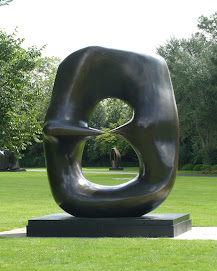What other art movements, design schools, aesthetical styles should we cite to bridge the gap between Leonardo and the 21st century? How old is Cubism? Did it start with the work of Cézanne? Did it unfold its analytical potential in Picasso’s paintings? Does it essentially mean a combination of geometrical basics with color? Do monochrome drawings from the Baroque period belong here? Timewarps into the art history are worth performing as they reveal amazing evidence of artists’ fascination with mathematical concepts, to wit:
Giovanni Battista Bracelli, the 17th century Italian engraver
see reference in 16th and 18th Century Digital Materials from the Lessing J Rosenwald Collection (Rosenwald 1345), the Library of Congress:
Luca Cambiaso. A Group of Cubist Figures, 1560.

Notably, this Cubist drawing was chosen to illustrate the post (in Spanish) that seeks to find appropriate places for happiness and suffering in human life.
The art history shows how mathematical concepts came to rescue art from crises.




![Objet Mathematique [Mathematical object], 1934-36](https://blogger.googleusercontent.com/img/b/R29vZ2xl/AVvXsEjLj3RbKwEsBQ9_oXAT8tJF4nqp-uvyD5k1gCCLHBM_b-FZsKFEu5Noon_p_mT_vcKWjWmTGpiLj-nxAv1VZpI_ITC5X-Q51T9wXr-Uzpb3xBtMpY_E_FqpW0ard-_7d4BrcTkb-2ASQUM/s264/00objet_math.gif)

8 comments:
Irina,
This is a great discussion
Thank you
n
PS. I'll write soon
This is a very interesting post
This is a very intresting piece of art!
this is very intresting!
This article really leaves you thinking about the unrevealed things in art history.I am going to research and find answers to these questions because i am interested.
i love this
amazing piece :)
Well done, folks! I'm an Italian blogger, exploring connections and mutual influences between science and literature, or even art as a whole. You are now in my blogroll. Ciao.
Post a Comment